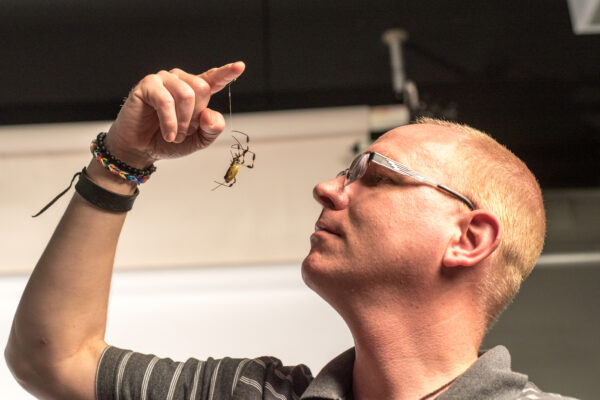Ingi Agnarsson is an evolutionary biologist and a professor of Zoology at the University of Iceland. Ingi´s research for the last 25 years has focused on using phylogenetics to study the evolution and biogeography of spiders and other organisms. While dabbling in biomechanics of spider silk and phylogenetics of mammals, Ingi´s main project for the last decade has been on the biogeography of arachnids in the Western Indian Ocean, and in particular the Caribbean Archipelago. Studying the origin and diversification of arachnids across islands and cave system he has discovered vast undocumented biodiversity, and described and named many new spider species.
Google Scholar profile
Plenary talk title: The generation of a biodiversity hotspot: Biogeography and diversity of arachnids in the Caribbean archipelago.
Abstract: The importance of islands in revealing evolutionary processes was already highlighted by Darwin’s work on the Galapagos and Wallace’s work in the Malay Archipelago. Island biogeography has provided many elegant examples of the evolutionary mechanisms involved in generating biodiversity. These include geological processes such as plate tectonics and volcanism, and traits of organisms such as their size, generation time, and dispersal ability. Here I focus on the role of dispersal abilities in the formation of biodiversity in the Caribbean hotspot. The West Indies consist of a dizzying number of islands, most of which are sufficiently old and isolated to have generated endemic forms, yet the are situated close enough to three continental landmasses to allow an active biotic interchange. By investigating multiple arachnid lineages in a comparative biogeographical approach, I find that dispersal ability is of fundamental importance in shaping both distribution and diversity of taxa. The degree to which phylogenetic patterns reflect geological history is inversely related to dispersal ability of taxa, ranging from predictable in poorer dispersers to highly stochastic in excellent dispersers. Diversification peaks at relatively intermediate dispersal abilities with stretches of ocean permitting rare colonization while acting as effective barriers to gene flow. Biodiversity hotspots thus result from an interplay of geological processes and biological traits of organisms.
